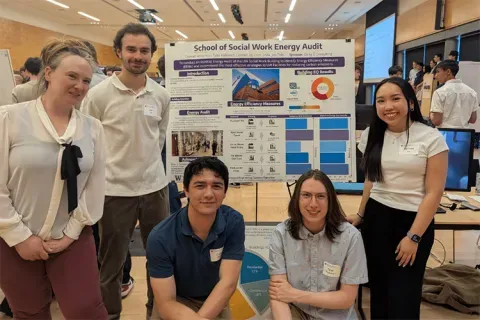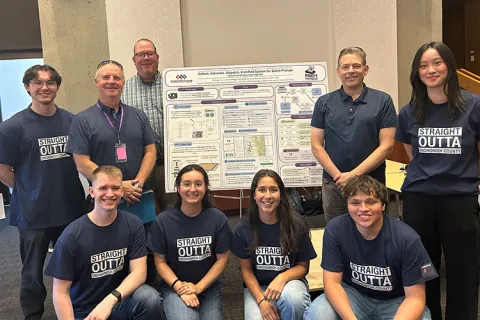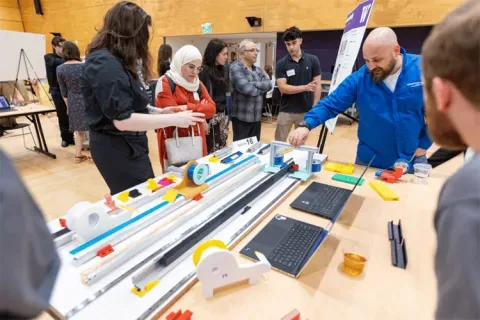Boeing
Portable Plasma Process Window Definition for Thermoplastic Surface Treatment
Non-traditional surface treatment methodologies like atmospheric plasma, laser treatment, and UV light have been shown to activate inert bonding surfaces. Particularly in thermoplastic substrates, these methodologies present promising options for adequate and robust surface treatment prior to structural bonding. Structural repair of thermoplastics requires specific plasma treatment parameters to be controlled - speed, number of passes, overlap, and stand-off distance between the substrate and the plasma source. Bonding of thermoset repair material to damaged thermoplastic substrates is currently being evaluated as a more practical repair method as opposed to welding of thermoplastic repair material. Currently, a set of plasma treatment parameters are being used to achieve a robust structural repair of thermoplastics. The student team investigated and defined the process window for plasma surface preparation using the Plasmatreat RD2004 portable unit for repair applications.
Faculty Adviser(s)
Luna Yue Huang, Materials Science & Engineering
Related News

Mon, 10/13/2025 | UW Mechanical Engineering
Capstone collaboration leads to award
An ME capstone team received first place for its energy audit of the UW School of Social Work building.

Thu, 07/17/2025
UW engineering students develop smart ballot solution
UW engineering students develop smart technology solution to improve ballot collection for Snohomish County.

Mon, 07/07/2025 | UW Mechanical Engineering
Capstone creations
Students displayed innovative capstone design projects at the 2025 expo.

Fri, 09/20/2024 | UW Civil & Environmental Engineering
Smarter irrigation for a greener UW
A new project combines satellite data with ground sensors to conserve water and create a more sustainable campus environment.